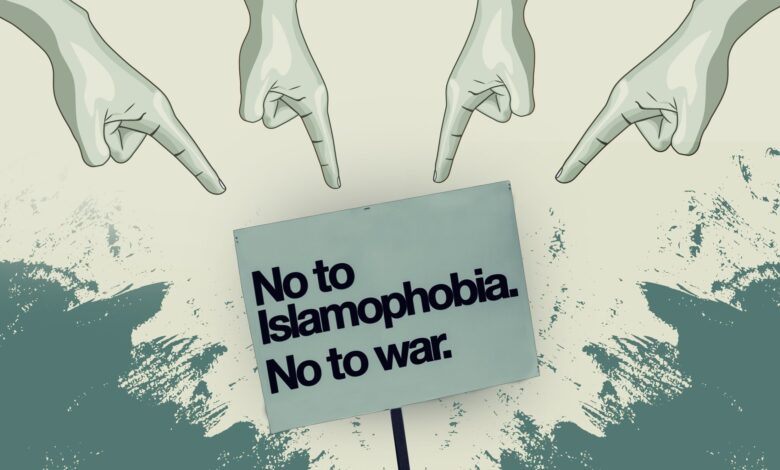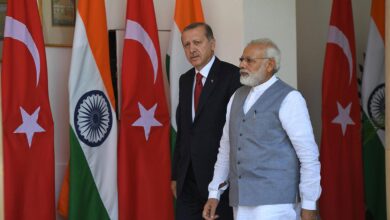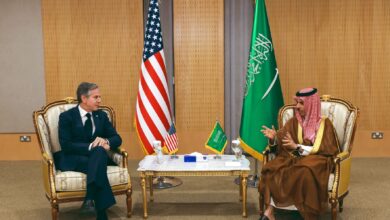Islamophobia and How Media and Politics Feed It: What to Do About It?

The prejudice against Islam and Muslims has become a disturbing global phenomenon. Unquestionably, the media and politics have contributed to an increase in this prejudice. The mechanism of how these two vital forces feed the growth in Islamophobic sentiment needs to be comprehended so that effective responses can be designed that counter it and foster a more accepting atmosphere.
Media’s Role in Propagating Islamophobia
Media play a very vital role in shaping public perception about Islam and Muslims. Sensationalist reporting, prejudiced portrayals, and selective coverage further add to the perpetuation of stereotypes and misinformation. News outlets often focus on the violence committed by extremist individuals while overlooking the diverse and peaceful practices of the overwhelming majority of Muslims. This form of distorted representation can help build fear and misunderstanding among non-Muslim people.
Television programs, films, and online platforms also often represent Muslims through negative stereotypes, including terrorists and oppressors. These further nurture unhealthy biases and provide a falsified view of Islam, which, in return, furthers the rise of Islamophobic attitudes. The effects of these media representations go deep into public opinion and shape the attitude of society toward Muslim communities.
Political Rhetoric and Islamophobia
It also depends on how leaders and policymakers use political discourse to either alleviate or worsen Islamophobia. Recently, several political leaders have used anti-Muslim rhetoric as a tactic for gaining public support by describing Muslims as a threat to national security or cultural values. Such rhetoric legitimates and amplifies prejudiced views, leading to discriminatory policies and social exclusion.
This can be created through inflammatory statements or acts by politicians and their support for repressive actions against Muslims, merely inculcating an environment of intolerance. These have led to hate crimes on the rise, really serving only to create tension and further marginalize Muslim communities in society. Furthermore, when political leaders neglect to take any action to address such Islamophobic acts and rhetoric, a message comes across that such acts are condoned, maybe even invited.
What Can We Do About It?
Let me outline concrete ways to address Islamophobia: a multi-dimensional approach involving media reform, political accountability, and grassroots efforts. Here are some concrete strategies that can help combat Islamophobia effectively:
Media Representation:
The attempts for a balanced and accurate representation of Islam and its adherents by the media. This will include representatives of diverse voices within Muslim communities and reports on stories that highlight positive contributions and day-to-day experiences. Media literacy programs are intended to equip the public with the critical means to evaluate media content for biased reporting.
Encourage Responsible Political Leadership:
Political leaders’ rhetoric and policies need to be challenged. Elected officials should publicly condemn Islamophobia and seek inclusive policies that protect the rights of all their citizens. Political campaigns and debates must focus on constructive dialogue instead of divisive rhetoric. Interfaith and intercultural dialogue should be encouraged.
This is achieved by building bridges among different communities. These bridges improve understanding and reduce prejudice. Events concerning interfaith and intercultural dialogue provide an avenue for people to be enlightened on the beliefs and experiences of others, thus enabling empathy and respect.
Educational Programs:
Education will help people fight prejudice. Schools and universities should include courses on Islamophobia and cultural competencies in their programs. Education allows young minds to appreciate diversity, reducing the chances of acquiring a discriminatory attitude.
Advocate for Policy Change:
Support policies that protect citizens from discrimination and help them feel socially included. These will include hate crime legislation, anti-discrimination laws, and equal treatment under the law for all, regardless of faith.
Community Engagement:
Engage with Muslim communities to understand perception and challenge. Community-based initiatives and partnerships can help address issues of discrimination and provide support for those affected by Islamophobia.
Social Media for Positive Change:
Social media can become a powerful tool in raising awareness and countering Islamophobic narratives. Campaigns foster positive stories, challenge stereotypes, and provide accurate information that helps shift public perceptions toward an informed and compassionate society.
In other words, to rid society of Islamophobia, efforts would need to be combined among the media, politics, and society as a whole. We can do this by advocating for accurate representation, holding political leaders accountable, supporting dialogue and education, and advocating for policy change to create a more inclusive and respectful society. Addressing Islamophobia is much more than combating prejudice; it’s about cultivating a climate in which every human being is looked upon with dignity worth valuing.



